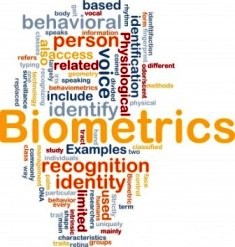Voice Biometrics Eliminate The Need For Passwords, Pin Numbers And Security Questions.
Voice biometrics now offers homes and businesses a cheaper biometric security option that is still very accurate.
Everyone has a unique voice and these systems focus on this unique vocal prints that each person has.
This technology is not only less expensive to implement than other forms of biometrics, but it’s minimally invasive, making it more popular among users today.
Here is a closer look at voice biometrics devices and the technologies that surround them, which can help you decide if this type of biometrics will work well for your home or business security needs.
Voice Biometrics Systems

5 Advantages Of Voice Recognition
These systems will check the individuals speech sample to a biometrics profile already in the database to verify that individual. Since these systems compare biometrics to current vocal references in the system, they can offer excellent accuracy and quick results. Here is a look at a few of the advantages of voice recognition security systems that use the latest biometric technology.
Voice Recognition Biometrics
Systems that use voice recognition biometrics usually require an individual to recite a series of numbers or a verbal phrase to get a good vocal sample. A microphone captures the vocal sample and then the sample is converted to a digital format so it can be processed. Feature extraction then occurs, creating a template of the vocal pattern. At this point, the individual can be identified or verified, depending on the features of the speech authentication system.
Voice Recognition Security
It’s important to understand how voice recognition security works. First, an individual must provide a sample of their vocals. When you speak, it causes muscles around the vocal cords contract, which narrows the gap between them. Air passes through this gap, which creates the vocal sounds. The entire vocal tract is responsible for creating an individual’s unique vocal patterns and these patterns are used by speech biometric systems.
Biometric Female Voice
While everyone has a unique voice, there are specific differences between male and female voices. When it comes to biometric female voice verification, pitch is higher than that of a man and is actually caused by female physiology. On average, a female has a shorter vocal tract, which causes variation in pitch. Even if a male and female speak at the same pitch, speech biometric systems can still identify speaker gender without a problem.
Voice and Face Recognition Software
Both biometric speech and facial recognition technologies are popular because they are minimally invasive, simple to implement and user friendly. For many people interested in home and business security, these two biometrics technologies are being combined together into one biometric device. Voice and face recognition software is available, requiring vocal samples and facial recognition.
When the two technologies are used together, they offer even better security. Although there is a slight chance that someone may fool one technology, it is even more difficult to be able to fool both technologies. These security systems require a face picture and a vocal sample to identify and verify an individual, making voice and face recognition software an excellent choice for those who want the very best in security systems.
Biometrics Voice Recognition
Biometrics speech recognition uses speech biometrics to create voiceprints, taking the small differences between voices and analyzing them. Depending on the system used, many different separate measurements of the speech pattern may be used to come up with a voiceprint. These biometric systems go far beyond simply comparing various files to find a match.
Systems understand the sound of a voice, identifying individuals no matter which words they say. Data points are created to create the vocal print and many of these biometrics voice recognition systems are actually text independent. This means that they don’t need to understand what a person says, but instead, they verify only by the characteristics of the voice. Text dependent systems analyze what people way and how they say it, which can be effective as well, since biometric speech recognition and speaker biometrics fit so well together.
Biometric Voice Verification
When considering biometrics speech systems, it’s important to understand the difference between biometric speech verification and identification. These differences affect how systems work and how accurate they are. Biometric voice verification systems work to verify an individual, deciding whether an individual is who they say they really are.
Although speech biometrics is not 100% accurate, when systems are provided with quality samples, there are few problems to deal with.
Systems can easily be implemented for home security, business security and can even be used via telephone, which is why this technology is continuing to grow so quickly today.
Return to the top of Voice Biometrics
Biometric-Security-Devices.com
Free Credit Repair Ebook
The Secret To Better Credit!
Do You Want To Take Your Credit Score To The Next Level?



